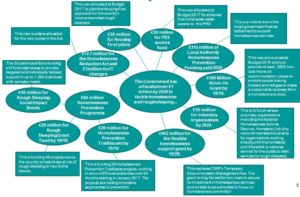
IamYiam is a health platform that creates personalised health and fitness activities and nutrition plans based on science, genetics and history. The company has written the following piece as an introduction to NHC members.
If your body is a temple, how can you worship it every day?
It’s a good question, and one that probably enters our thoughts at various moments throughout our lives, especially at times when we are feeling run down or have an illness that interferes, or worse, inhibits our normal everyday lifestyle.
How we see our bodies is an interesting topic. Most of us desire to look good, some like to feel good too and others see our bodies as something to be respected; worshipped almost. Ultimately it is a matter of choice. Then there are those who see themselves from a different perspective. Those that seem to expect our bodies to be this robust, throw-anything-at-it machine, that will continue forever at peak performance, regardless of what nourishment we give it or what maintenance we provide. Our temples absorb this wear and tear and abuse, until they start to show signs of breakage. Only then we cry out for help.
This appreciation of our bodies, or more accurately general lack of appreciation, highlights a huge challenge in the way we think about our own health and the lifestyles we lead.
There is no doubt that currently we live in society that has a challenged curative healthcare system that costs us globally $8 trillion, with preventable diseases now making up for 75% ($6.1 trillion) of the global healthcare costs. This see’s the UK healthcare and wellbeing market with costs as high as £180bn with the UK’s NHS already overstretched.
One translation of these statistics could reflect that, as individuals, our approach to health seems to be that we choose to either hope for the best or ‘put it off till later’. We more or less act as if we are happy to treat our bodies to a life of disregard, and in turn ignore the inevitable health problems that will contribute to the trillions of pounds required to fix our bodies in the future.
Let’s imagine this challenge in another way. You are gearing up to set off on a lifelong voyage, similar to one’s lifelong health journey you might say.
First, you choose your destination, and then look to your mode of transport, your vehicle, your body in health terms. Interestingly, not all of us can have the body of a strong powerful 4×4, with some of us born to be more of a fast, streamlined sports car.
Next, as an intelligent individual that cares for our other passengers, likely you would prepare your chosen mode of transport for this adventure, safely checking it had enough fuel, understanding the correct tyre-pressure, glad you had recently undertaken the engine and brake service, all now maintained with refreshed engine oil, and maybe even a shiny body polish. Full of pride and confidence you press the start button, and purr into life.
Now imagine how enjoyable this journey would be as you smoothly travel to your destination, your body performing perfectly; capable of handling the twists and turns of the road ahead. And maybe one day becoming a timeless classic.
The alternative…jump into your car, your fingers crossed while you try to remember the last time you ever had your car serviced, wondering if the tyres have enough air or even tread for the road ahead. Your engine struggles into life, spluttering and coughing, as you limp off down the track, not looking forward to the journey and unsure as to whether you and you passengers will ever make it safely to your destination.
It seems therefore, that as we decide on our health journey we do have a choice, and that the challenge of caring for our bodies is not just a matter of simply sticking our heads in the sand. What else could be the cause for such alarming industry numbers?
The good news is that recent data shows us that personalised preventative health is the growth industry of the next decade, with consumers looking for factual guidance and better support in helping them to stay fit, healthy and happy in the long term. The choice of direction we take is changing from that of waiting to be fixed when things go wrong, to choosing a lifestyle that adds to the quality of one’s health and helps prevent the illness and poor performance of the past.
This choice however means consumers need trusted information on health and wellbeing and finding this information can be difficult, with the core questions of what will work for me and where do I start often forming the initial challenge.
It seems this new attitude to healthier bodies could help in the business world in other ways too.
In the UK, research shows that employees who suffer poor health, or have a lack of focus on wellbeing or display low social engagement have a direct impact on business, not just in lost productivity, but in generating a £29 billion annual bill for sickness absence. Yet despite the clear cost of getting it wrong, less than one in ten UK businesses adopt an approach to wellbeing that is linked to their business objectives. Most businesses know it pays to invest in the wellbeing of their people, but don’t know where to start.
This seems to reflect a more operational challenge, which is to provide employers immediate access to proven programs, providing meaningful performance focused results for their staff. Workplaces are ultimately where people, for better or worse, spend much of the working day, and combined with the need from business for better tracking and evaluation, the improvement in employees’ wellbeing to drive business performance is a clear route to growth.
Moving forward, we live in a world of information, connection and innovation, yet with too much choice and confusion. With so many heath conditions preventable and lifestyle-related, we anticipate consumers more engaged than ever in their healthcare, fitness and wellness future.
Whether it’s about helping employers in supporting employees manage their everyday health, through bespoke nutrition and fitness plans, or ensuring individuals are able to take control of their own health goals and receive clear advice. Or being able to track your progress through smart online assistants, whatever the solution, fortunately there are companies such as iamYiam that see this challenge and are there to help guide you on the path to wellness and improvement, with performance based results.
Deciding on your health journey, your destination and how you get there, is still a matter of choice, reflecting how you see yourself today and more importantly, tomorrow. Perhaps the real question should be “is your temple seen as a relic from the past, or to be enjoyed into the future as a timeless classic”?
The choice is yours.
www.iamyiam.com
For further information, please contact Alan Gordon, Chief Marketing Officer, iamYiam alan.gordon@iamyiam.com






